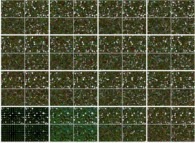![Click to download and possibly see the movie [Cliquez pour télécharger et voir éventuellement le film] Click to download and possibly see the movie [Cliquez pour télécharger et voir éventuellement le film]](image.jpg)
The tridimensional brownian motion of 1738 light and small particles + 77 heavier and bigger ones [Le mouvement brownien tridimensionnel de 1738 particules légères et petites + 77 plus lourdes et plus grosses]
.
![Click to download and possibly see the movie [Cliquez pour télécharger et voir éventuellement le film] Click to download and possibly see the movie [Cliquez pour télécharger et voir éventuellement le film]](image.jpg)
The tridimensional brownian motion of 1738 light and small particles + 77 heavier and bigger ones [Le mouvement brownien tridimensionnel de 1738 particules légères et petites + 77 plus lourdes et plus grosses]
.
